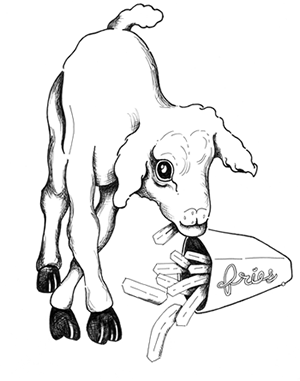
Uses of the Book
I wrote Thinking Divergently with Nurtured Nursery Rhymes for children of
all ages. The basic extended rhymes, presented at the beginning of each
script, can be read aloud and enjoyed by readers or nonreaders.
Parents, Grandparents, and Teachers
Read the basic rhymes, located at the beginning of each script, out loud to
children to help them harvest the pure joy of reading. Make the listening
enjoyable by changing the pitch of your voice when appropriate and adjust your
reading rate to add drama and excitement to the narrative. Very young children
will begin to say rhyming words that they have heard repeatedly, and the older
ones will enjoy reciting entire verses.
Parents or grandparents who travel or live apart from their offspring may tape record the rhymes and mail them to the children. In some cases, two grandparents can record a reader’s theater script with each person reading several different parts. Obviously, the readers must use quite different voices for each part. It may get tricky, but it is worth the effort.
Families may also record reader’s theater and mail a tape to grandparents or friends. As families read together, children realize the value parents place on this important skill as well as the enjoyment that evolves from shared reading experiences.
Teachers
The reader’s theater scripts contain varying levels of difficulty and, with
proper coaching on vocabulary, may be handled by students as young as
nine-years-old. They can be used in a variety of ways to encourage reading at
school.
Reading Buddies
The rhymes and scripts are appropriate for use in reading buddy programs
wherein older students are paired with younger ones for literary experiences.
Classes of students are paired, and this may result in a fourth grader joining
a second grader once a week, building a relationship that encourages reading
and writing. At times the older student reads to the younger one, and at other
times the roles are reversed.
One of the paired classes could prepare and perform reader’s theater for the
other, or a group of mixed grade students might combine for a reading. The
older students would then be able to help the younger ones with their part,
and the younger ones might have ideas about voice inflection that older
children could be too embarrassed to use.
Special Education Students
The scripts are appropriate for use when students want to perform in front
of a real audience. I shared one of the scripts with the teacher of a group of
fourth and fifth grade special education students, and her students prepared
and performed it for kindergarten students at their school. The young ones
enjoyed the performance, and the special education students were quite proud
of their success.
Gifted Students
Reader’s theater is an excellent resource for teachers of gifted students
who want to provide theatrical experiences yet have little time to allocate
for the preparation of plays. Gifted students often enjoy humorous scripts
with challenging vocabulary.
I encourage gifted students to appropriately alter the reader’s theater scripts. First, it is a good idea to present several different scripts and allow the students to choose their favorite, since motivation often comes with choice. Then, students may make the vocabulary more challenging by using a thesaurus to change words in the script. Later, groups assigned different scripts can attempt to stump one another with the vocabulary presented. Gifted students tend to memorize reader’s theater lines very quickly, although this is not required; therefore, they enjoy deviating somewhat from the script.
Although all students may be given the opportunity to write their own reader’s theater scripts, gifted students may be ready to do so at a younger age. For further information, please read the information provided in the section titled Writing Reader’s Theater Scripts: A Student Activity.
Instructional Component
Instructional information, including the lesson component, type of script,
and questions and activities, is located at the end of each basic rhyme. I
hope that the lesson component helps teachers tie the reader’s theater with a
classroom goal, such as friendship, responsibility, or problem solving.
Teachers can adapt the questions and activities for multiple grades. In most
cases, I planned these to help students think divergently about the content of
what they are reading.
I’m a former classroom teacher and educational consultant with a Ph.D. who loves creating jewelry. Read more ».

